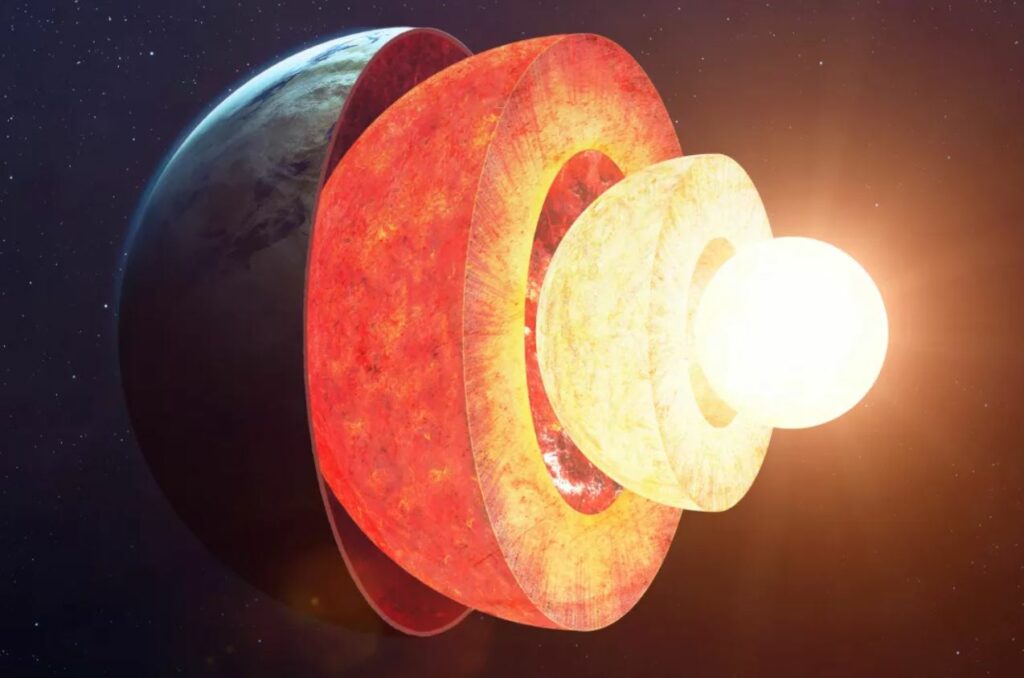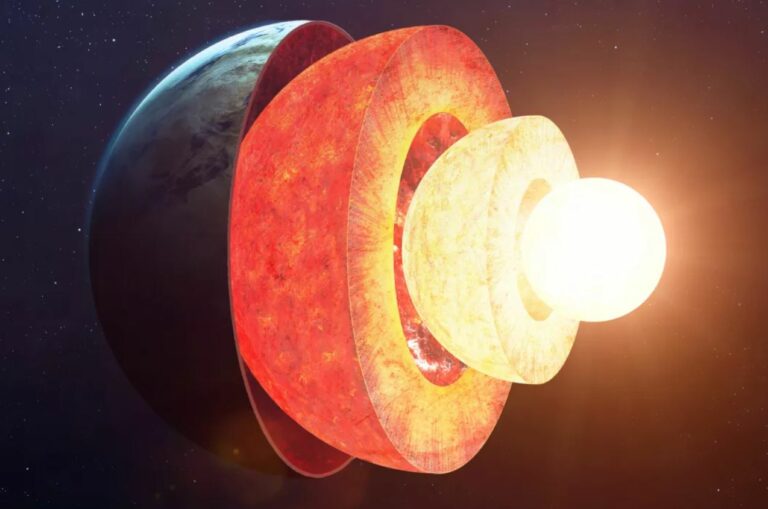Possible Existence of Enclosed Liquid Iron Swirls within Earth’s Ostensibly Solid Core
Though Earth’s innermost core is solid, new research suggests that it hosts a lot of variation.
Recent research, employing the faint reverberations of seismic waves returning from Earth’s deep interior, suggests that the inner core of our planet may possess greater diversity than previously believed. The study implies that Earth’s inner core, which expands approximately one millimeter each year as the outer core solidifies, might have experienced faster growth in earlier geological eras. Additionally, the study proposes the existence of swirls of liquid iron ensnared within the supposedly solid core, according to Keith Koper, a seismologist at the University of Utah and senior author of the study.

Koper stated, “The inner core experienced rapid growth in the past, followed by a slower rate. As a result, not all of the iron solidified, potentially trapping some liquid iron within.”
The inner core, spanning approximately 1,520 miles (2,440 kilometers) in diameter, predominantly consists of solid iron and nickel and rotates within the outer core—an expanse of molten iron and nickel around 1,400 miles (2,260 km) thick. This movement of metallic materials at Earth’s core generates the planet’s magnetic field. Over time, the outer core has gradually crystallized, but our understanding of the rate at which this process occurs remains limited, leading to questions regarding the evolution of Earth’s magnetic field.
Since direct access to the core is unattainable, Koper and his team employed data from 20 seismometers deployed for earthquake wave measurements and nuclear-weapons testing monitoring. Their analysis concentrated on seismic waves produced by earthquakes with a magnitude of 5.7 or higher, which possess sufficient energy to penetrate the inner core, resulting in faint echoes detected by the seismometers. The dataset included 2,455 such earthquakes.
Koper explained, “The signals received from the inner core are extremely faint, measuring at a scale of approximately one nanometer. We are essentially searching for a needle in a haystack, making these subtle echoes and reflections quite challenging to detect.”
The significant finding, published in the journal Nature on July 5, demonstrates the “inhomogeneous” nature of the core’s composition, indicating a non-uniform solidification process and presenting a mosaic of distinct structures within the inner core.
Revised: “We have now obtained conclusive evidence that this type of non-uniformity permeates the entire inner core,” stated Guanning Pang, a postdoctoral researcher at Cornell University, who conducted the study during their doctoral tenure at the University of Utah.
Koper explained that seismic waves become increasingly scattered as they delve deeper into the core, suggesting a heightened level of variation in proximity to Earth’s center. He further speculated that this phenomenon could be linked to the evolving rate at which the core solidifies over time.
Do not forget to share your opinion with us to provide you with the best posts !





0 Comments